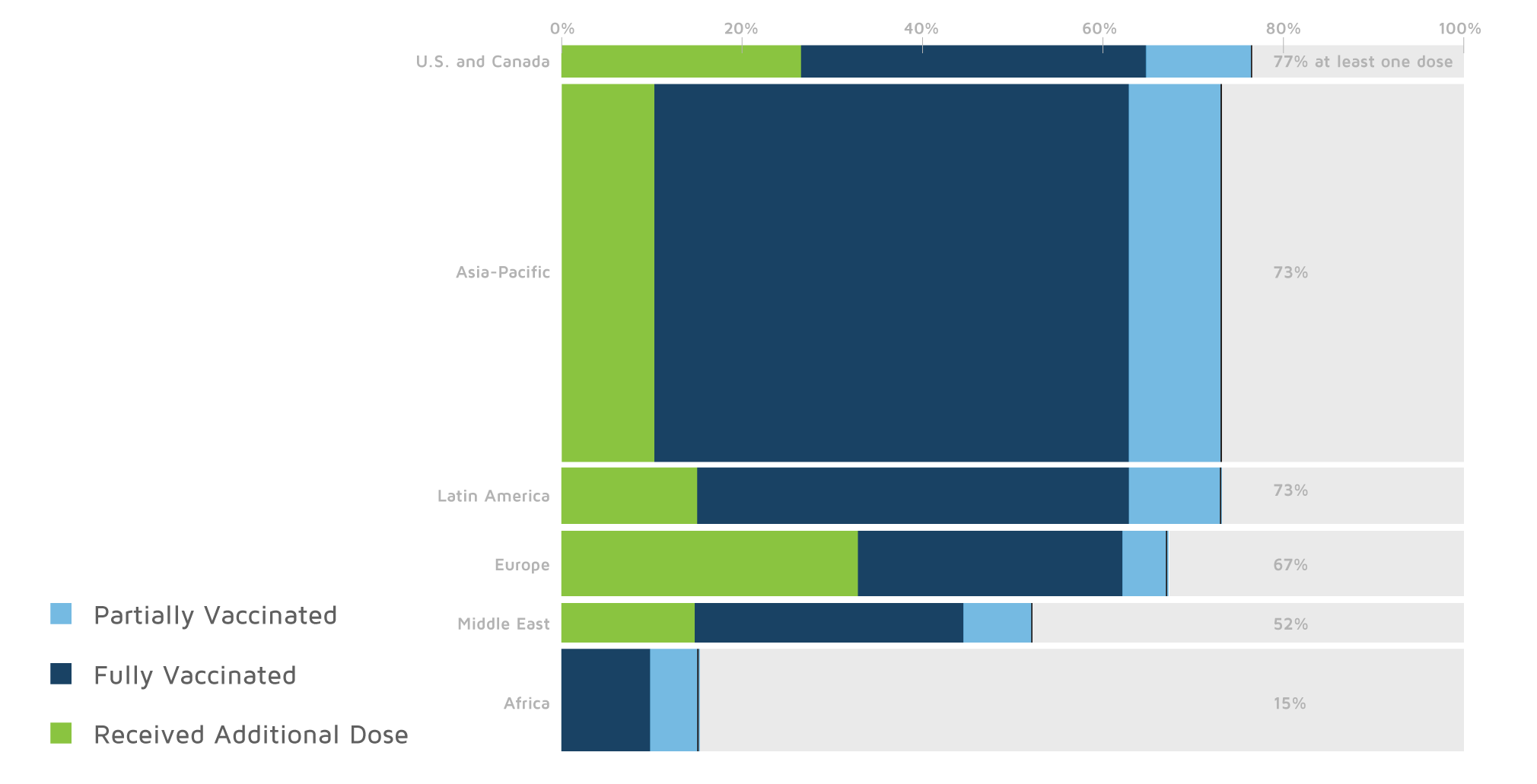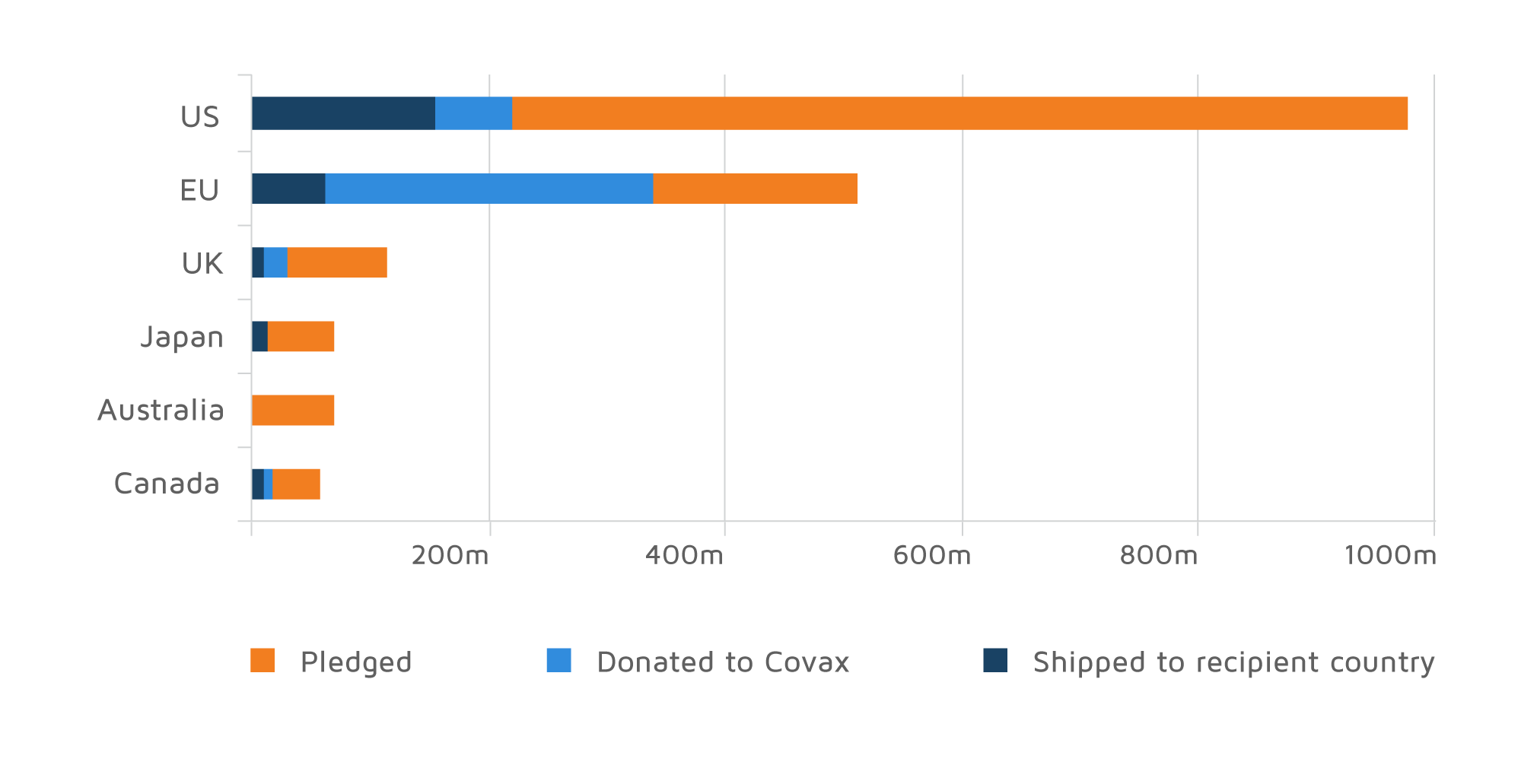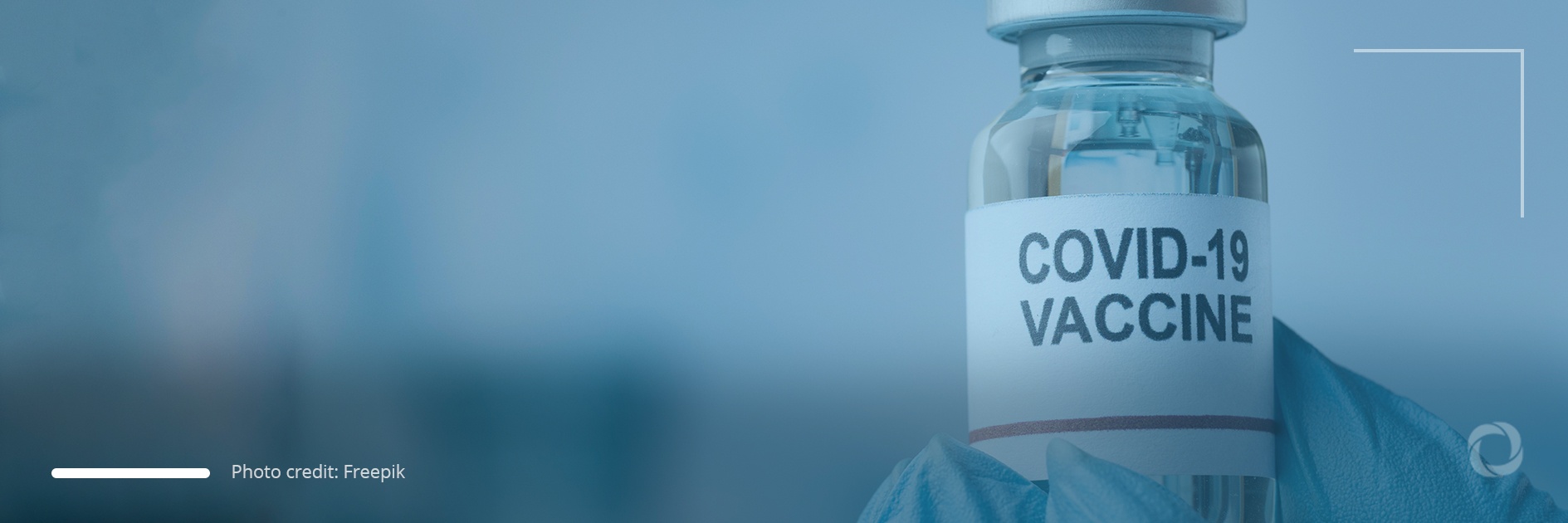Although over 9 billion doses of the COVID-19 vaccine have been administered in 197 countries so far, vaccine accessibility still remains unequal across nations. Low-income countries in particular are falling far behind, struggling to secure a sufficient amount of vaccines for their populations. In the meantime, richer countries continue to inoculate their population with a booster dose, a fact described as a “scandal” by the WHO director-general.
According to statistics published by Our World in Data, as of January 25, 2022, 60.7% of people living worldwide have already had at least one shot of the COVID-19 vaccine, and of these only 9.8% are those residing in low-income countries. Overall, so far 9.95 billion doses of vaccines have been administered around the world, with 27.6 million being administered every day recently.
Fig.1. Share of people vaccinated against COVID-19, Jan 10, 2022
Source: Our World Data
For comparison, the percentage of people fully vaccinated is 63% in the US, 79% in Canada, 88% in China, 72% in Germany, 73% in France, and 95% in the United Arab Emirates while in the Democratic Republic of Congo only 0.2% of the population have been fully vaccinated. In Ethiopia and Haiti, this figure stands at 1.4% and 0.7%, respectively.
Overall, the top five countries with the highest rate of fully vaccinated people are the United Arab Emirates, Brunei, Portugal, Chile, and Malta where 95%, 93%, 89%, 89%, and 89% of the population have been fully vaccinated respectively. In contrast, the five countries with the lowest rates of fully vaccinated populations are Burundi, Congo, Chad, Haiti, and Guinea-Bissau where respectively only 0.1%, 0.2%, 0.7%, 0.8%, and 1.1% of people have received two doses of the vaccine.
Fig.2. Share of population fully vaccinated

In terms of a regional perspective, Africa remains the continent with the lowest vaccination rate, where only 15% of people have had at least one dose of the vaccine. In comparison, in the US and Canada, 77% of the population have received at least one dose of the vaccine and in Europe, 67% of people have been vaccinated with at least one shot.
Fig.3. Vaccination rates by region (share of the total population)

Vaccines with the highest global reach
The first vaccine to be approved by the World Health Organization (WHO) was the Pfizer – BioNTech which has now been given in 146 countries and territories worldwide. However, the Oxford-AstraZeneca vaccine is currently the most used in the world, being administered in 177 countries and territories.
Fig.4. Number of countries and regions using each vaccine
Source: BBC
Vaccine donations
Covax, a platform coordinated by Gavi, the Vaccine Alliance, the World Health Organization, and the Coalition for Epidemic Preparedness Innovations (CEPI), aims to ensure access to vaccines for everyone in the world. The platform initially promised to deliver around two billion vaccines by the end of the year. However, it has now downgraded its supply forecast and so far it has distributed over 1 billion vaccines.
Fig.5 Covid-19 vaccine shots pledged and donated

Booster Doses
Additional and booster vaccine shots are offered to fully vaccinated people in many countries as protection from the virus declines. For that purpose, over 938.1 million extra doses have been administered globally. However, WHO Director-General, Tedros Adhanom Ghebreyesus, commenting on booster shots, has said it was “a scandal” that every day six times more vaccine boosters are being administered globally compared to the number of first doses in low-income countries.
“It makes no sense to give boosters to healthy adults, or to vaccinate children, when health workers, older people, and other high-risk groups around the world are still waiting for their first dose,” he noted.

